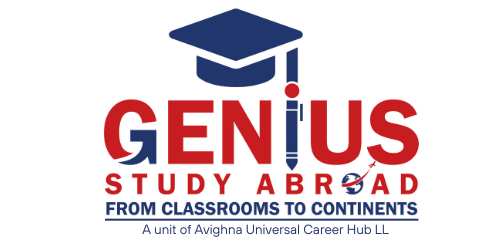# let's Grow Your Hand
Study in the Canada: Your Roadmap to Success!
Navigate Your Path to Success - Expert Guidance for Studying Abroad in the Land of Opportunities!
Why Study in Canada?
Canada consistently ranks high in global education indices, ensuring that students receive top-notch education and exposure to a multicultural society. The emphasis on innovation and technological advancement makes Canadian institutions leaders in various fields.
Academic Excellence
Benefit from world-renowned universities and cutting-edge research, ensuring a top-tier education that opens doors globally.
Diverse Culture
Immerse yourself in a melting pot of cultures, ideas, and perspectives, fostering personal growth and a truly enriching experience.
Career Opportunities
Gain access to a dynamic job market with ample internship and post-graduation employment opportunities, setting the stage for a successful career.
Innovation Hub
Join a country at the forefront of innovation and technology, offering a stimulating environment for creativity and entrepreneurial pursuits.
Quality of Life
Experience a high standard of living, excellent healthcare, and a variety of recreational activities, making the Canada a well-rounded and desirable destination for international students.
The Transformative Benefits of Choosing to Study
Discover the world, expand your mind! Choose to study abroad for top-notch education, cultural immersion, and personal growth. Your journey to global success starts here!
Choose Your Desired Courses
Discover the world, expand your mind! Choose to study abroad for top-notch education, cultural immersion, and personal growth. Your journey to global success starts here!
Choose Your Interested Location in Canada
Discover academic excellence amidst stunning landscapes. Study in Canada for a vibrant cultural experience, renowned universities, and opportunities in tech and entertainment industries.
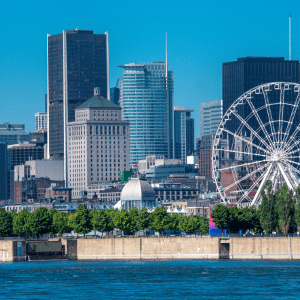


Montreal
- Phone:+1 (859) 254-6589
- Email:info@example.com
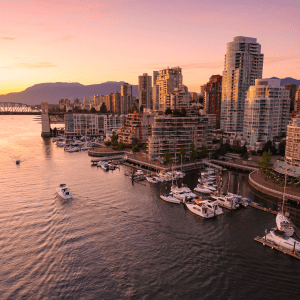


Vancouver
- Phone:+1 (859) 254-6589
- Email:info@example.com
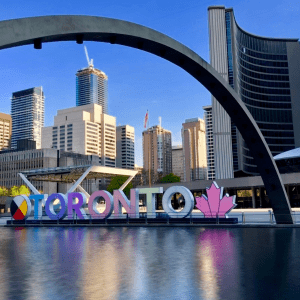


Toronto
- Phone:+1 (859) 254-6589
- Email:info@example.com
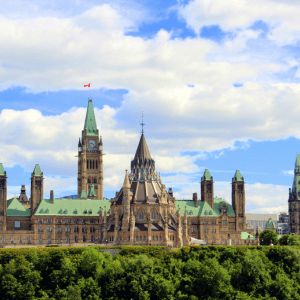


Ottaawa
- Phone:+1 (859) 254-6589
- Email:info@example.com
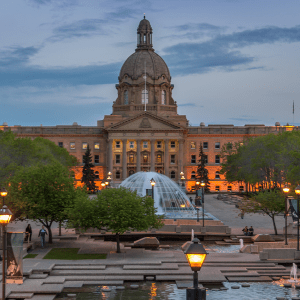


Alberta
- Phone:+1 (859) 254-6589
- Email:info@example.com
Admission requirements for studying in Canada
Planning to study in the Canada? Let us help you get started with the basic admission requirements that you will need.
Preparing for Examinations
Pursuing a course in the Canada begins with competitive and rigorous exams such as GRE/GMAT for postgraduate studies and IELTS or TOEFL for English proficiency. Some programs do not require GRE/GMAT. Thorough preparation is vital as these exams significantly influence university admissions.
University Application Process
The application process involves submitting academic transcripts, letters of recommendation, a statement of purpose, and exam scores. Meeting application deadlines and following specific university guidelines are critical to success.
Figuring Out Your Finances
A full-time program in the US can cost up to ₹ 70Lacs. Planning your finances is essential, considering options like scholarships and loans, though the latter may come with high-interest rates.
Visa Process
Applying for a student visa entails presenting the necessary documentation, attending an interview, and paying a fee. It is advisable to start this process early to avoid delays.
Booking Your Travel
Early travel bookings are recommended, as costs can be high, especially during peak seasons. Consider budget airlines and travel packages to minimize expenses.
Finalizing Your Stay
The cost of accommodation varies based on location and preferences. Exploring housing options early allows for a more budget-friendly selection, whether choosing university housing or private rentals.
How You Can Manage expenses while studying in the Canada
Our programs offer financial aid and the chance to study in Canada at low cost. Here's how international students in Canada manage their living expenses while studying there.
Opting for hybrid programs, which combine online and in-person classes, can offer significant cost savings. These programs allow students to complete a portion of their coursework remotely, reducing expenses associated with accommodation, transportation, and on-campus living.
The flexibility of hybrid programs enables students to strike a balance between academic pursuits and managing their budget effectively.
Canada is home to numerous institutions and organizations that offer a wide range of scholarships for international students. These scholarships can cover tuition fees, living expenses, or a combination of both. It is crucial for students to research and apply for available scholarships well in advance.
Many academic institutions and governmental bodies provide financial aid based on merit, need, or specific criteria related to the student’s field of study. Applying for scholarships can significantly alleviate the financial strain of studying abroad.
Taking out student loans is a common method for funding education in Canada. Financial institutions, both in Canada and in the student’s home country, often provide loans specifically tailored for international students. Before opting for a loan, it is essential to thoroughly understand the terms and conditions, interest rates, and repayment plans.
Students should explore government-sponsored loan programs and private financial institutions to identify the most suitable loan options that align with their financial capacity.
Canada allows international students to work part-time during their studies. Engaging in part-time employment not only provides students with valuable work experience but also contributes to covering living expenses. Most students work in sectors such as retail, hospitality, or on-campus roles.
It is important, however, to strike a balance between work and academics, ensuring that employment commitments do not compromise the quality of education.


























Everything You Need To Know About Canada
Students who have never been to Canada often have an image of it as the land of snow and hockey. What they find when they come to the country is quite different. Polar bears are only found in the northernmost regions and in most parts of Canada, winter only lasts a few months of the year. Hockey is our national winter sport but there are a thousand other sports and activities to choose from—some on sunny beaches, some near vast lakes or oceans, and some in the midst of busy modern cities.
Canada is a land of rich diversity, encompassing urban sophistication and abundant nature and wildlife. It is safe yet exciting; stable yet filled with adventure. It features cutting-edge technology, inspiring cultural icons, and a vibrant society that is open to everyone. Canadians tend to be modern, welcoming, and open-minded.
Across Canada are examples of excellence, innovation, and beauty, all of which—along with top-notch educational institutions—make Canada one of the leading study abroad destinations in the world.
Canada Is a Wonderful Place to Live and Study: Since 2004, the United Nations has regularly ranked Canada highly in its Quality of Life Index. Combining excellent educational institutions, an innovative economy, a tolerant and safe culture, and extraordinary beauty, Canada is an ideal destination for international students.
Canadian Education Is World Class: Canada is also ranked #2 by the Organization for Economic Cooperation and Development (OECD) for higher education achievement—60% of its citizens between the ages of 25 and 64 have a post-secondary education. The Times 2021-22 World University Rankings placed 11 Canadian universities in the top 250 (and five of these in the top 100). As well, Shanghai Ranking’s 2021 Academic Ranking of World Universities placed four Canadian institutions in its top 100, and 20 in the top 500.
Canada’s secondary school students excel in science, reading, and mathematics. In the 2018 PISA results testing Grade 10 students from 65 countries around the globe, Canada ranked 6th on the Reading Scale, 8th in Science, and 12th in Maths ahead of the US, UK, Australia, New Zealand, and France. High-quality French and English language teaching are also reasons students choose Canada.
Canada Is Multicultural and Open to the World: Canada is officially bilingual (English and French), and across the country, more than 200 languages are spoken. The biggest cities – Vancouver, Toronto, and Montreal – are home to many immigrant communities. A tolerant culture is among the top Canadian values—informally, on the streets and public venues, and formally, in Canada’s laws and government. Of particular note is the Charter of Rights and Freedoms that enshrines equality for all.
Canada Is Innovative: Canada’s educational institutions have long been incubators for innovation. The BlackBerry, flat-screen technology, SMART boards, voice compression applications for cell phones and computers, and IMAX film are among the many revolutionary technologies invented and developed by men and women who studied and conducted research in Canada.
Canada Produces Leaders: Among these are the environmentalist David Suzuki; the famous architect Frank Gehry (Bilbao Guggenheim Museum, Walt Disney Concert Hall, etc.); the economist John Kenneth Galbraith (who served in the administrations of US presidents Franklin D. Roosevelt, Harry S. Truman, John F. Kennedy and Lyndon B. Johnson); the cinematographer James Cameron (Titanic, Avatar); the author Margaret Atwood; musicians Justin Bieber, Sarah McLachlan, and Shawn Mendes; and actors Rachel McAdams, Jim Carrey, Kiefer Sutherland, and Ryan Gosling.
Canada Is a Highly Competitive Economy: Canada has one of the world’s most stable economies. The country also boasts one of the fastest economic growth rates among the G7 countries, and the International Monetary Fund projects this trend to continue through 2023. Canada is similarly high-ranked for its business environment among international observers.
Canada Is a Major Player in Collaborative Research and Development: Many of Canada’s educational institutions are engaged in international research partnerships to address major issues facing our world today. Canadian institutions recognize that Canadian research receives a crucial boost in terms of reputation and impact when quality international partners contribute. Many of the world’s most pressing problems are international in scope, and Universities Canada notes:
“Canada’s universities are known for conducting world-class research. Globally, we punch well above our weight in output: we rank sixth in terms of average citation levels across all fields among the top scientific countries and produce four per cent of the world’s scientific papers despite representing only 0.5% of the world’s population. Canada’s universities, are key economic drivers of regional and national prosperity, and a powerhouse of research and development activities, performing 41% of the nation’s total R&D, valued at $14.5 billion each year. University researchers collaborate on more than $1.5 billion worth of research with community and non-profit community groups every year and conduct almost $1 billion worth of research in collaboration with the private sector annually, providing the ‘intellectual raw material’ that drives innovation and builds prosperity.”Examples of projects include the innovative NEPTUNE ocean floor laboratory; the Canadian HIV Vaccine Initiative; ArcticNet, a revolutionary approach for studying the effects of climate change; and Canada’s Advanced Research and Innovation Network (CANARIE Inc.), which facilitates research and development around the world.”
Meanwhile, colleges and institutes from across the country led over 6,400 applied research projects in 2019/20 in all key sectors of the economy. These partnerships involved businesses and community organizations of all sizes, including students who gained innovative work experience. Colleges and institutes received over $354 million in 2019/20 to support applied research activities, an increase of 19% over the previous two years. This growth is mainly driven by the private sector, which invested $111 million. According to Colleges and Institutes Canada, In 2019/20, research activity at colleges and institutes led to more than 5,500 new processes, products, prototypes and services
Canada’s first inhabitants are collectively known as First Nations. These peoples spanned the entire territory of modern-day Canada and had unique vibrant cultures and economies. Beginning in the 1500s, French and British colonizers began colonizing parts of what is now known as Canada for their respective monarchies. Even today, much of the land on which Canadian cities are built is considered unceded and it is now customary to note this history and the Nations who used to occupy the land at the start of many public events or meetings in what is known as a “land acknowledgement”.
From 1864 to 1867, representatives of Nova Scotia, New Brunswick, and the Province of Canada—with British support—worked together to establish a new country. These men are known as the Fathers of Confederation. They created two levels of government: federal and provincial.
The old Province of Canada was split into two new provinces: Ontario and Quebec, which, together with New Brunswick and Nova Scotia, formed the new country called the Dominion of Canada. Each province would elect its own legislature and have control of such areas as education and health.
The British Parliament passed the British North America Act in 1867. The Dominion of Canada was officially born on July 1, 1867. All remaining provinces joined Confederation one by one in the years to come. Newfoundland and Labrador is Canada’s newest province, having joined Confederation in 1949. Canada also has three territories: Northwest Territory, Yukon Territory, and Nunavut.
In 1982 the country formally severed its legal dependence on the British Parliament with the Canada Act and gained its own constitution and the important Charter of Rights and Freedoms. Today’s Canada enjoys strong historical links with Britain but has more direct ties with the US (its largest trading partner), though its foreign policy and political structure are distinct.
Canada was a founding member of NATO, the United Nations, the Commonwealth and La Francophonie.
One of the world’s wealthiest major industrialized countries, Canada has always been a trading nation and commerce remains the engine of economic growth. It is a member of the G7, the G20, the Organization for Economic Co-operation and Development (OECD), the United Nations (UN), the World Trade Organization (WTO) and many other international bodies.
Canada’s economy includes three main types of industries:
- Service industries provide thousands of different jobs in areas like transportation, education, health care, construction, banking, communications, retail services, tourism, and government. More than 75% of working Canadians now have jobs in service industries.
- Manufacturing industries make products to sell in Canada and around the world. Manufactured products include paper, high technology equipment, aerospace technology, automobiles, machinery, food, clothing, and many other goods. Canada’s largest international trading partner is the United States.
- Natural resources industries include forestry, fishing, agriculture, mining, and energy. These industries have played an important part in the country’s history and development. Today, the economy of many areas of the country still depends on developing natural resources, and a large percentage of Canada’s exports are natural resources commodities.
While Canada boasts a highly educated workforce and a diversified economy, it is unusual among developed nations in the continuing importance of its natural resources sector (e.g., forestry, mining, energy)—even as it is one of the world’s most computer-literate and technologically sophisticated markets.
The Canadian Dollar is one of the most stable currencies in the world. Unless otherwise specified, all dollar figures presented throughout this course are in Canadian Dollars (CAD). You can check the current exchange rates for your local currency with this convenient currency converter from the Bank of Canada.
Canada is a federal parliamentary constitutional monarchy. Though the Governor General is officially the representative of Queen Elizabeth II and serves as Head of State in Canada and abroad, Parliament—which includes the Canadian House of Commons and Senate—is sovereign, governed by the parliamentary process laid out in Canada’s constitution.
The Canadian Prime Minister is the leader of the political party whose representatives were elected to the most seats in the House of Commons and is therefore considered to be the head of government. The Prime Minister appoints Ministers to his or her cabinet, which is the primary collective decision-making unit in the Canadian parliament. While Canada’s two main political parties tend to go back and forth in terms of who is in power, and other political parties are engaged in the democratic process, Canada’s government is overall incredibly stable and secure.
Education and Health care are provincial, so systems for both are slightly different in each province. All are extremely high quality and comprehensive in spite of the different jurisdictions.
Canada’s population is now just over 38 million, which is relatively small for a country of this size (Canada is the second-largest country in the world in terms of land mass). Much of Canada’s vast area is uninhabited and most Canadians live in highly urbanized centres in the south; 80% of the population is concentrated within 160 kilometres of the southern (US) border.
According to the last census in 2021, the largest Canadian cities are Toronto (6.2 million), Montreal (4.3 million), Vancouver (2.6 million), and Calgary (1.35 million) and Edmonton (1.3 million).
Canada is a multicultural and diverse country. The majority of Canadians are of European ancestry, primarily descendants of the early French and British colonists, as well as later immigrants from eastern and southern Europe.
However, as patterns of immigration have shifted over the years, so has the ethnic mix of the Canadian population. The second half of the twentieth century saw a great influx of people from Asia and Oceania, the Caribbean and South America, and Africa and the Middle East. In the 2016 Census, 40% of Canadians reported having one or more of 200 ethnic origins and over 19% of Canadians classified themselves as a visible minority. Over the past 150 years, Canada has welcomed 17 million immigrants from all around the world thanks to national policies supporting immigration and multiculturalism.
“Indigenous peoples” is a collective name for the original peoples of North America and their descendants. Indigenous peoples inhabited the land that later became Canada before European settlers arrived. The Canadian constitution recognizes three broad categories of Indigenous people: First Nations, Métis, and Inuit. These are three distinct groups of peoples who enrich the country with unique histories, languages, cultural practices, and spiritual beliefs. More than 1.5 million people in Canada identify themselves as an Indigenous person, according to the 2016 Census.
Canada has two official languages: English and French. English is the native language for 56% of the population and French is the native language for 20% (2016 Census, Statistics Canada). While the majority of Canada’s French speakers live in the province of Quebec, many live in New Brunswick (Canada’s only officially bilingual province), and Ontario. There are, however, smaller French-speaking communities all throughout Canada. Chinese dialects are the third most common native language in Canada, followed by Punjabi, Arabic, and Tagalog.
Many religions are practised in Canada, but about one quarter of Canadians say they have no religious affiliation. Canadians are remarkably tolerant of different religions, and religion does not play a prominent role in political or economic life relative to other parts of the world.
To many people in other countries, the word “Canada” evokes images of wide-open spaces, dramatic mountains, pristine forests, and majestic lakes. All of this is true, and our landscape and beauty are an important part of Canadian identity. But they’re not all of it.
Canada is also known to be a modern, progressive nation with open-minded citizens who are proud of our diverse origins and ethnic diversity. We produce athletes, artists, and engineers, doctors and architects, writers and scientists. There is a place for every type of talent in Canada, and the mix of people and specializations creates a vibrant, exciting society that’s secure but also dynamic and open to change
A few years ago one of Canada’s national newspapers, The Globe and Mail, interviewed various people about how they would sum up Canadian culture in an article entitled, “Canadian culture: A category?” One respondent, an immigrant to Canada, was quoted as saying:
“Canadians are very accepting people, very polite, very honest. It’s part of their culture. That’s why they accept new people. They are also more interested in other cultures these days. People like to try different foods, different ways of dress. They want to see the world and learn about new cultures. Not only do Canadians accept people into their country and their society, they accept aspects of other cultures into their own. Canadian society is composed of many different cultures, sharing their culture with each other. Canada is definitely multicultural. It’s also Canadian.”
With a country as large as Canada, there are also very different regional cultures: people in the Maritime region in the east of the country are quite different than those on the West Coast (e.g., in British Columbia). And Quebec, Canada’s majority French-speaking province, has its own unique customs and sense of identity (often deemed more “European” than the rest of Canada), with a rich arts, entertainment, and music scene. See more about regional culture in an upcoming section, Geography and Regions.
There are dozens of different sports played, among them hockey, lacrosse, baseball, basketball, and soccer (more commonly known as football outside of North America). Skiing, both downhill and cross country, is another national passion. Canada is home to every cuisine in the world: diners can choose anything from Indian, Thai, or Chinese to Ethiopian, Mexican, or French—to name a few.
Major national, regional, and international festivals and concerts either originate in or pass through Canada during the year, providing another wonderful benefit to studying in Canada.
Perhaps stemming in part from the rich culture and lifestyle Canadians enjoy, Canada placed 14th in the United Nations’ 2021 World Happiness Report. According to the Global Peace Index (20121) Canada is ranked in the top 10 most peaceful countries in the world, keeping company with the likes of Iceland, Denmark, and New Zealand. Canada regularly ranks in the top 12 on the United Nations’ Human Development Index, a comparative measure of life expectancy, literacy, education, standards of living, and quality of life.
When choosing a place to study, students often factor in culture and lifestyle as well as educational merits, whether their program is for a few weeks, months, or several years. For this reason, as well as the quality of education, Canada continues to rise as a destination for high-calibre students.
Occupying the northern region of the North American continent, Canada’s land mass is 9,093,507 square kilometres, making it the second largest country in the world after Russia. In addition to coastlines on the Atlantic and Pacific oceans, Canada has a third seacoast on the Arctic Ocean, giving it the longest coastline of any country. To the south, Canada shares an 8,893-kilometre land border—the longest in the world—with the United States. To the north, the Arctic islands come within 800 kilometres of the North Pole. Canada’s neighbour across the Arctic Ocean is Russia.
Among Canada’s most distinctive features are the vast mountain ranges: the Torngats, Appalachians and Laurentians in the east, the Rocky, Coastal, and Mackenzie ranges in the west, and Mount St. Elias and the Pelly Mountains in the north.
There are more than two million lakes in Canada covering about 7.6 percent of the country. The main lakes are Huron, Superior, Erie, and Ontario (known as the Great Lakes) as well as Great Bear, Great Slave, and Winnipeg. The St. Lawrence River (3,058 km long) is Canada’s most important river, providing a seaway for ships from the Great Lakes to the Atlantic Ocean. In total, Canada has almost 900,000 km2 of fresh water.
There are ten provinces and three territories in Canada spanning a few geographic regions. These are detailed in brief below. Further details on each province can be found on the “Where To Go” section of the Destination Canada website. Agents should direct students wanting to learn about Canada to this website, and use it to familiarize themselves with the different parts of Canada.
Atlantic Canada: This region includes the provinces of Prince Edward Island, New Brunswick, Newfoundland and Labrador, and Nova Scotia. In these picturesque and charming provinces, you’ll find some of the most unique and friendly people in the world. The music, folklore, seafood, and scenery in Atlantic Canada are unlike anywhere else. The region boasts countless beaches, coves, parks, and forests, and the towns and cities are often quaint and filled with Maritime artifacts. Tiny villages abound, but there are also cities like Charlottetown, Fredericton, Halifax and St. John’s.
Central Canada: Quebec and Ontario are the provinces of Central Canada, and the large cities of Toronto, Ottawa (Canada’s capital city), Montreal, and Quebec City are found in this region. Excellent cuisine is to be found in these cosmopolitan centres, but also in the smaller villages and towns, where fresh, local ingredients are proudly featured. There are famous wine-growing regions, the largest skating rink in the world (the Rideau Canal), Parliament Hill, dense forests, and excellent lakeside camping grounds. Central Canada is a perfect mix of urban delights and outdoorsy adventure.
The Prairies: In the prairie provinces of Saskatchewan and Manitoba one can find some of the most extraordinary natural beauty in Canada—from seemingly endless fields of wheat in the summer to almost Arctic conditions in the winter. This region is made for those who love hiking, boating, skiing, or fishing—and lots of space. At the same time, the cities and towns of Saskatchewan and Manitoba are incredibly diverse, friendly, and interesting—boasting a wonderful mix of immigrant cultures, cuisines, and celebrations.
The West: Like Central Canada, the western provinces of British Columbia and Alberta feature an extraordinary mix of nature and ultra-urban delights. But the nature is on a different scale— bigger, taller, and more open. Think mountains, ocean (British Columbia), wineries, golf, whale watching, stunning gardens, and the mildest climate in Canada. World-renowned ski resorts Whistler and Banff are in this region, as are the famous Rocky Mountains. British Columbia’s city of Vancouver is one of the world’s most beautiful with an eclectic mix of ethnicities and influences, many from Asia. Calgary, in Alberta, is one of the fastest-growing cities in Canada, and headquarters to many oil and gas companies.
The North: Canada’s North—encompassing the Yukon, Northwest Territories and Nunavut—is one of the most striking examples of pristine wilderness left in the world. Arctic creatures include polar bears, walruses, seals, white wolves, snowy owls, and caribou. Yet, while this region draws rugged adventurers and thrill-seeking tourists, it also contains interesting, vibrant cities (Yellowknife, Whitehorse, Iqaluit) and amazing arts festivals featuring Inuit art and culture as well as those from more recent arrivals in the region.
About 80% of Canadians live within 160 kilometres of the country’s southern border, where there are warm springs, hot summers, and pleasantly crisp autumns. Winter usually runs from December to March, but the exact dates and lowest temperatures will vary across the country. Canada’s climate is characterized by its diversity, both from region to region and with four distinct seasons.
Canada’s seasonal temperature variations are embraced by Canadians: there are so many leisure activities to choose from as a result, from swimming outdoors in the summer to skiing in the winter! Although many outdoor activities require special equipment, rentals or second-hand items are easy to find and affordable. Most institutions have clubs which will bring student groups camping or skiing, making outdoor activities even more accessible to international students.
International students should be assured that all buildings in which they will study are well-heated in winter months, and most have air conditioning in the summer. Many university and college campuses have underground tunnels or covered bridges through which students can move from building to building in comfort, regardless of the weather.
Temperatures vary through the year and depending on the city. For example, students staying for a year in Toronto may see +35C as well as -20C, while students studying in Vancouver or Halifax will see more mild temperatures but will have many more rainy days. Agents should advise students studying in Canada to bring appropriate clothing depending on the weather conditions they are likely to face, for example a warm coat, hat, boots, scarf and mittens in the winter, a good rain coat for spring and summer, and cool summer clothing for those staying in June – August. For more detailed weather information visit: https://weather.gc.ca.
- Wherever you study, at whatever level, they can be sure of getting a degree, diploma, or certificate that will be recognized around the world. Canada is among the leaders in the G8 in terms of its per capita investment in education, leading to high-quality and well-respected faculty, programs, and institutions.
- Each Canadian province and territory has its own quality assurance (accreditation) mechanisms to ensure high educational standards are met, and there are robust laws, policies, and procedures that govern the operation of all K-12 and post-secondary institutions. Each province also offers students the ability to study in English, in French, or in both.
- Canadian students are consistently ranked among the top academic performers in reading, math, and science according to ongoing OECD and PISA research. Moreover, students gain practical skills and hands-on training and generally have easy access to teachers, instructors, and professors.
- There are excellent resources to help agents/students find out how to evaluate how/ whether their existing academic credentials will be accepted in Canada. One of these resources can be found at www.cicic.ca, a website that provides information on education credential assessment in Canada.
- Canada has an excellent reputation for transfers between levels/types of education, making studying here flexible and exciting—students don’t run into the bureaucratic roadblocks common in less flexible education systems. Moreover, Canada is known for its laws allowing eligible post-secondary students to work in Canada while studying and after graduation, and for providing opportunities for eligible graduates to attain permanent residence.
Academic Credentials
Certificate Course: Certification courses are basically worked for students who are not able to get into degree programs. Generally, Duration of these courses vary from six months to one year of duration.
Diploma Course: Diploma is a short term course generally of 2 or 3 years which mainly focus on training students in particular field. The admission to diploma course can be taken after clearing high school examination. Diploma is being done through recognized university or an educational institution.
Bachelor’s Degree: An undergraduate or Bachelor’s degree is usually the first university degree, such as an Associate or Bachelor's degree.
Master’s Degree: A postgraduate degree encompasses a range of qualifications that require an undergraduate degree to be considered for entry, these include courses at Postgraduate Diploma level all the way to a PhD.
Doctoral Degree: A doctorate degree is the highest level of academic degree in most fields. For research or university teaching, the degree is usually a PhD. Typically a doctorate degree takes four years to complete, post-bachelor’s degree.
Professional school degree: Professional degrees include the Doctor of Medicine (MD), the Doctor of Education (EdD), and the Juris Doctor (JD), among others.
The Canadian education system is valued as being a world-leader in research programs while as yet staying accessible and diverse.
Canadian degree programs appear to be more adaptable too.
Regardless of what degree students choose to study, they are given some option with regards to choosing classes.
Along these lines, Canadian students can decide on their own workload and what subjects they will study as per the discipline
Post-Secondary education is the responsibility of the individual provinces and territory.
At the post-secondary level, Canada extends a range of educational institutions.
There are two major types of Institutions:
- Degree-Granting Institutions
- Non degree granting Institutions
What is a University?
- An institution which offers both undergraduate and post graduate degrees is considered a university. University offers undergraduate programs that will lead a student towards a master’s degree or a doctorate. University will also offer a more diverse curriculum and programs because they have a much larger number of enrolled students.
What is a University College?
- The term 'university college' is used in a number of countries to denote institutions that offer tertiary education but do not have full or independent university status. A university college is often part of a larger university.
What is a Community College?
- The Canadian provinces financially support some of the colleges in their province. These publicly-funded colleges are called community colleges. They may receive funds from the federal government of Canada or other sources as well.
What is a Institute of Technology and Advanced Learning?
- Institute of Technology and Advanced Learning is a polytechnic institution . All of the qualifications they offer are career-focused, with an emphasis on hands-on learning, so students are fully prepared for the workplace after they graduate.
What is a College of Applied Arts and Technology?
- College of Applied Arts and Technology offers full-time, part-time, certificate, diploma, web based, correspondence and apprenticeship programs. It provides postsecondary and career-entrance preparation programs to provide better opportunities to students.
Quebec Education System
The Quebec education system comprises four levels:
- Preschool and elementary education
- Secondary education (high school, adult academic and vocational training)
- College education (pre-university and technical programs) and
- University education.
College education in Québec education system :
College is the first level of post-secondary studies and precedes university studies.
The college network offers various educational opportunities:
- programs leading to a Diploma of College Studies (DCS)
- programs leading to an Attestation of College Studies (ACS)
- other types of education and training
- CEGEP(Collège d'enseignement général et professionnel)
Programs of Study Leading to a DCS
- A program is an integrated set of learning activities leading to the achievement of educational objectives based on set standards.
Programs of Study Leading to an ACS
- Programs leading to an ACS are technical programs set by the colleges. The colleges establish the competencies to be acquired, determine the courses and are responsible for the evaluation of learning and the certification of studies. The ACS is a diploma issued by the colleges.
Other Types of Education and Training:
- Springboard to a DCS pathway
- Remedial activities
- Activities fostering student success
- University prerequisites
- Customized Training and Services for Business and Industry
CEGEP(Collège d'enseignement général et professionnel) : In Quebec, a Cegep is the equivalent of a community college. Cegeps offer two-year general studies programs in preparation for university or three-year technical programs that prepares students for the job market.
CAQ
The Certificat d'Acceptation du Quebec (Quebec Acceptance Certificate, CAQ) is required for most temporary foreign workers and students who intend to reside in the province of Quebec.
Fee: There is a $117 application fee for a CAQ for studies. The fee is non-refundable, even if the application is denied.
student visa application process for Indian students applying to study in Canada involves several steps. It's important to note that immigration policies and procedures can change, so it's recommended to refer to the official website of Immigration, Refugees and Citizenship Canada (IRCC) or consult with a registered immigration consultant for the most up-to-date information. Here is a general overview of the student visa application process for Canada:
- Receive an Offer of Admission:
Obtain an acceptance offer from a Designated Learning Institution (DLI) in Canada. The DLI is a school authorized by the Canadian government to host international students.
- Get a Unique Client Identifier (UCI) and Letter of Introduction: After receiving the acceptance offer, the educational institution will provide a Unique Client Identifier (UCI) and a Letter of Introduction. These are essential for the visa application.
- Complete the Online Application: Create an online account on the Immigration, Refugees and Citizenship Canada (IRCC) website and complete the study permit application form.
- Gather Supporting Documents: Collect the required supporting documents, including:
Proof of acceptance (Letter of Acceptance from the DLI)
Proof of identity (passport)
Proof of financial support to cover tuition fees, living expenses, and return transportation
Proof of English or French language proficiency (e.g., IELTS, TOEFL)
Passport-sized photographs
Educational transcripts and certificates
Medical examination results (if required)
Statement of Purpose (SOP)
Any additional documents required by the visa office
- Pay the Application Fee: Pay the non-refundable application fee as required.
- Biometrics Collection: Indian students applying for a study permit may be required to provide biometrics. Check the IRCC website for the latest information on biometrics requirements.
- Submit the Application: Once the online application is complete, submit it along with all required documents electronically.
- Processing Time: Wait for the visa application to be processed. Processing times may vary, and it's advisable to apply well in advance of the intended start date of the program.
- Visa Decision: If the study permit application is approved, the applicant will receive a Letter of Introduction.
- Electronic Travel Authorization (eTA): If required, apply for an Electronic Travel Authorization (eTA) to board the flight to Canada.
- Arrival in Canada: Upon arrival in Canada, present the Letter of Introduction to the Canada Border Services Agency (CBSA) officers, who will issue the actual study permit.
let's Stand Together
Study in the Canada
Find programs that match your eligibility and aspirations then apply with reduced application fees, a free assessment and access to a dedicated advisor.
Latest News
Standards compliant e-business.Phosfluorescently expedite functional products via premium action
items wireless innovation compliant e-business.
Concerned About Expenses? Tips for Managing Your Budget While Studying Abroad
Are you dreaming of studying abroad, immersing yourself in a new culture, and gaining valuable life experiences? The allure of […]
Is Culture Shock Real? Navigating the Uncharted Territories of Studying Abroad
Hey there globetrotters and adventure seekers! Are you ready to embark on a journey that will broaden your horizons, challenge […]
Wondering Where to Begin? How to Choose the Perfect Study Abroad Destination
Are you feeling a little adventurous? Maybe a bit curious to explore the world beyond your campus walls? Well, studying […]
Frequently Asked Questions (FAQs)
A small river named Duden flows by their place and supplies it with the necessary regelialia. It is a paradise
Canada offers a high-quality education system, diverse cultural experiences, and excellent post-graduation job prospects. Additionally, the country prioritizes inclusivity and provides a safe and welcoming environment for international students.
To apply for a Canadian student visa, you need to obtain an acceptance letter from a designated learning institution, provide proof of financial support, submit a valid passport, and complete the online visa application process. Consult the official website of the Immigration, Refugees and Citizenship Canada (IRCC) for detailed guidelines.
Yes, Canada offers a variety of scholarships for international students based on academic merit, leadership, and other criteria. Universities, government bodies, and private organizations provide these opportunities. Research and apply for scholarships well in advance of your intended start date.
Yes, international students in Canada are allowed to work part-time during their studies. This can be an excellent opportunity to gain work experience, cover living expenses, and enhance your resume. However, it’s important to be mindful of the restrictions outlined by your student visa.
The cost of living in Canada varies depending on the city and lifestyle. Generally, it includes expenses such as accommodation, transportation, food, health insurance, and miscellaneous items. Planning a budget and exploring cost-effective options can help manage living expenses effectively.
Yes, Canadian universities typically have three main intakes:
- Fall Intake: September
- Winter Intake: January
- Summer Intake: May/June (less common)
After receiving an acceptance letter from a designated learning institution, you can apply for a study permit online. The process includes providing necessary documents, demonstrating financial capacity, and undergoing medical examinations if required. Check the IRCC website for the most up-to-date information.
Yes, Canada offers various post-graduation work permit (PGWP) programs that allow international students to work in Canada after completing their studies. This provides an opportunity to gain valuable Canadian work experience.
Canada offers a wide range of academic programs at various levels, including undergraduate, graduate, and postgraduate studies. The diverse and inclusive education system covers fields such as sciences, arts, engineering, business, and technology.
Canadian culture is known for its friendliness and inclusivity. Engaging in campus activities, participating in community events, and building connections with fellow students are great ways to adapt. Additionally, exploring local traditions and customs will enhance your overall experience in Canada.
Useful Links
Subscribe Now
Don’t miss our future updates! Get Subscribed Today!
©2024. Geniustudy. All Rights Reserved.




